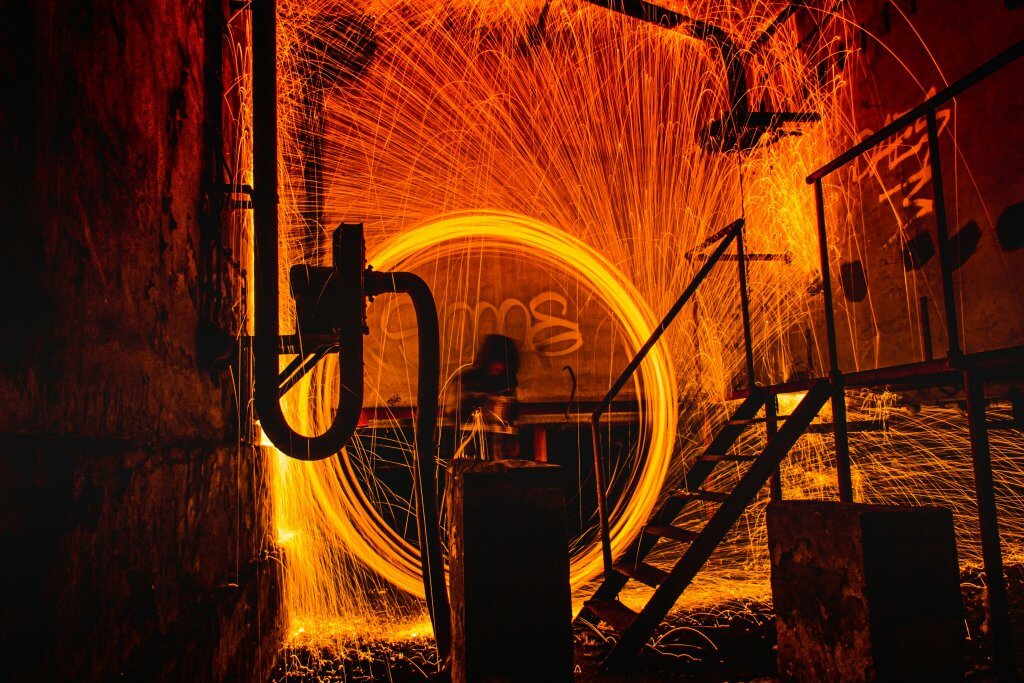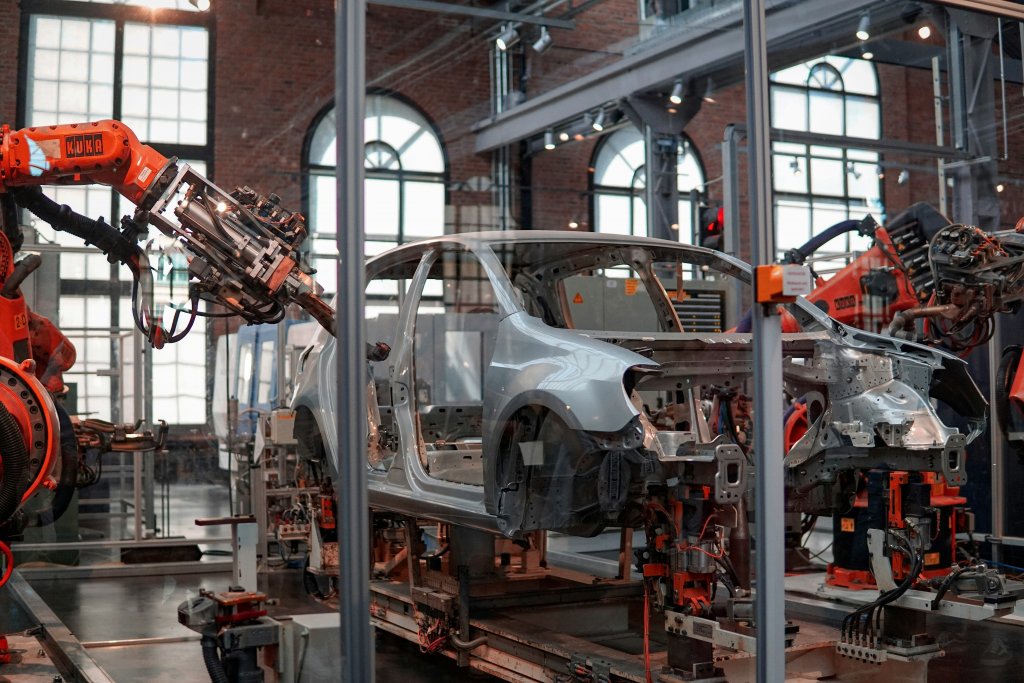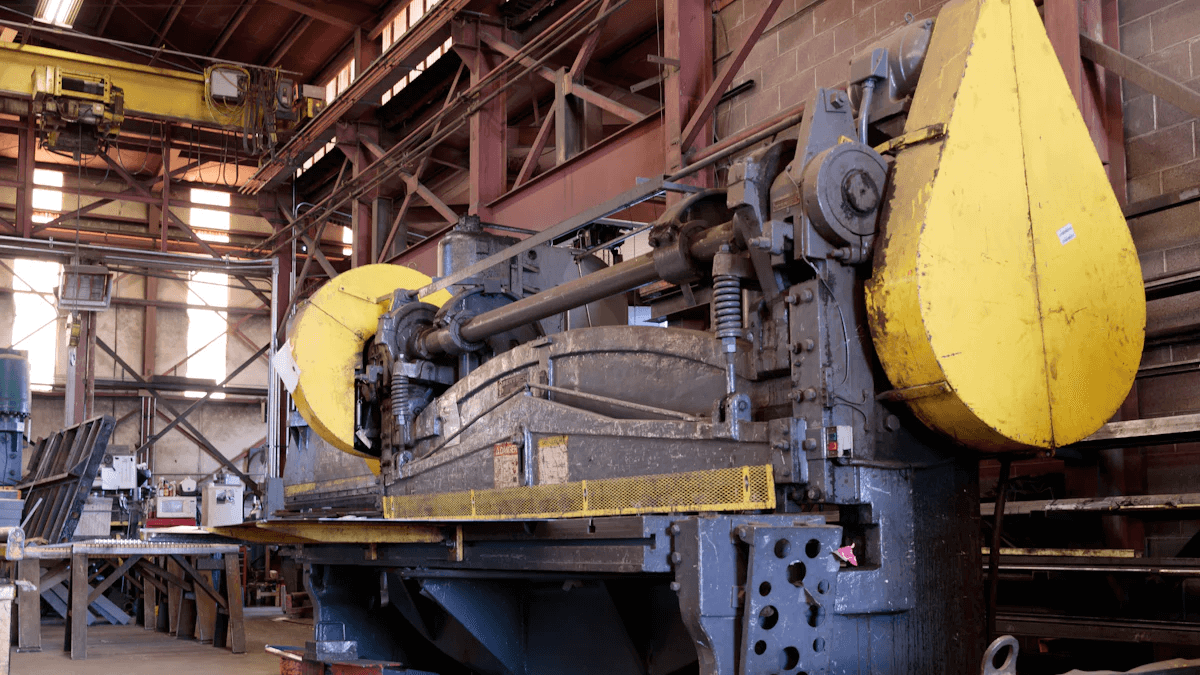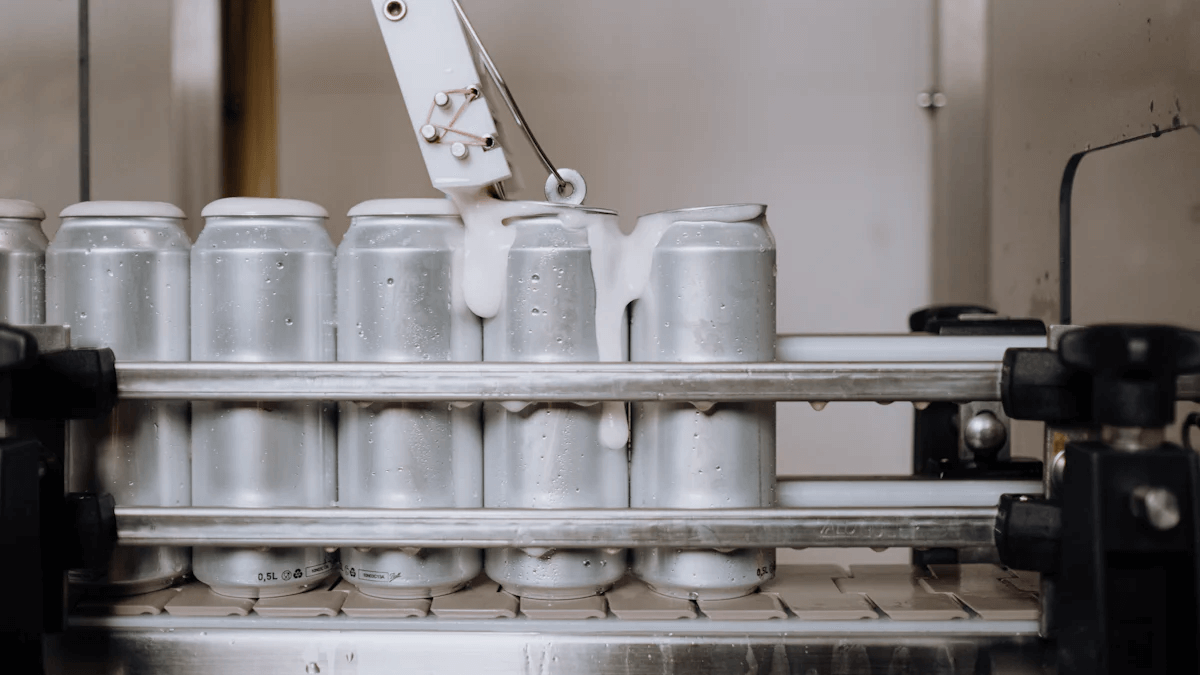Maximizing Efficiency and Cost Savings with the Latest Roll Forming Machine Technology
Understanding Roll Forming Machines
Roll forming machines play a crucial role in modern manufacturing, offering efficient and cost-effective solutions for shaping sheet metal into various profiles. To understand the technology behind roll forming machines, it’s essential to delve into their basic functionality and evolution.
The Basics of Roll Forming Machine Technology
How Roll Forming Works
Roll forming is a continuous metal shaping process that involves passing a flat sheet of metal through a series of rollers to gradually form the desired profile. This method allows for the creation of complex shapes with high precision and consistency.
Key Components of a Roll Forming Machine
A typical roll forming machine consists of several key components, including entry and exit guides, roll tooling, and a cutoff press. These components work together seamlessly to ensure the smooth transformation of raw material into the final product.
The Evolution of Roll Forming Machines
From Manual to Automated Systems
Historically, roll forming was a manual process that required significant labor and time. However, technological advancements have led to the development of automated servo-electric roll forming machines. These automated systems streamline the metal forming process while maintaining high levels of security.
The Role of Software in Modern Roll Forming Machines
Modern roll forming machines are equipped with advanced software that enables precise control over the entire production process. This software facilitates real-time monitoring, adjustments for different material specifications, and seamless integration with other manufacturing equipment.
The integration of automation and software has revolutionized roll former manufacturing operations by enhancing efficiency, reducing material waste, and ensuring consistent product quality.
Statistical Data:
- The market size for roll forming machines was valued at USD 6million in 2022.
- Technological advancements have led to an expected CAGR growth rate of 4% by 2032.
- Automatic Roll Forming Machines offer high efficiency, precision in forming, reduced material waste, and easy integration into production lines.
Technological Advancements in Roll Forming Machines
Roll forming machines have undergone significant technological advancements, particularly in the processing of high-strength materials and achieving precision and tolerance in modern machines.
High-Strength Material Processing
Challenges and Solutions
Processing high-strength materials presents unique challenges for roll forming machines. The increased material strength can lead to issues such as cracking, flare, bow, and twist during the forming process. To address these challenges, adjustment aids such as digital readouts and single-point adjustment systems have been introduced. These aids not only increase efficiency but also allow for more repeatable setups, minimizing defects and ensuring consistent product quality.
Benefits of Advanced Material Handling
The use of advanced material handling equipment has revolutionized the roll forming industry. According to a study by LinkedIn on Insights into Automatic Roll Forming Machine Industry Market, automatic roll forming machines offer high efficiency, precision in forming, reduced material waste, and easy integration into production lines. This advancement has significantly improved production rates while reducing costs and enhancing product quality. Additionally, manufacturers are increasingly integrating advanced technologies like artificial intelligence, IoT, and data analytics to further improve productivity and efficiency.
Precision and Tolerance in Modern Machines
Achieving Tighter Tolerances
Modern roll forming machines are capable of achieving tighter tolerances than ever before. This is crucial for industries that require precise profiles with minimal deviations. A study from Transparency Market Research emphasizes that roll forming machine manufacturers are focusing on advanced technologies to develop products that offer better performance. These advancements enable the production of complex shapes with high precision while minimizing material waste.
Impact on Product Quality
The impact of precision and tolerance in modern roll forming machines extends to product quality across various industries. The ability to consistently produce high-quality profiles with minimal waste aligns with the key findings from Exploring Components and Function of Roll Forming study on LinkedIn. The study highlights that the importance of using roll forming machines lies in their ability to efficiently produce high-quality profiles with minimal waste, reduced costs, and a high degree of flexibility to meet the demands of modern manufacturing.
These advancements have positioned roll forming machines as cost-effective solutions for various manufacturing industries by offering favorable cost per part, especially for high-volume production.
Scientific Research Findings:
- According to a study published on LinkedIn about Roll Material Handling Equipment Market Size Projections, opportunities within the market are being driven by the expansion of industries that extensively use rolled materials.
- The same study emphasizes that there is a growing demand for efficient and versatile material handling solutions as manufacturing operations scale up.
- Furthermore, technological advancements in these roll forming machines are fueling market expansion according to insights from Transparency Market Research.
By leveraging these technological advancements in roll forming machines, manufacturers can expect improved production rates, cost savings, better product quality leading to a competitive edge in the market.
Real-World Applications of Advanced Roll Forming Machines
The application of roll forming machines extends beyond traditional manufacturing, with real-world implementations in emerging technologies such as solar racking and construction projects. These applications demonstrate the versatility and efficiency of advanced roll forming technology.
Solar Racking Industry Innovations
The Introduction of Portable Roll Forming Machines
In recent years, the solar racking industry has witnessed significant innovations driven by the introduction of portable roll forming machines. These compact and versatile machines have revolutionized the production of structural components for mounting solar panels. The portability factor allows for on-site fabrication, eliminating the need for transporting pre-formed components and reducing logistical complexities. This innovation aligns with a study on Roll Forming for Emerging Technologies: Solar Panels, which highlights the in-line punching and cut-to-length capabilities of roll forming mills that enable efficient production and customization of solar racking components.
Enhancing Solar Panel Installation Efficiency
Roll forming technology has played a pivotal role in enhancing the efficiency of solar panel installation. By offering a lighter weight product while maintaining structural integrity, roll forming contributes to streamlined installation processes. Furthermore, the ability to install holes, punches, and other features to accommodate unique racking and panel designs showcases the adaptability of roll formed components in meeting specific industry requirements. A study on The Best C-Channel Fabrication Process for Solar emphasizes that roll forming offers cost-effective production methods, aligning with the industry’s focus on efficiency and sustainability.
Construction and Infrastructure Projects
Scaffold Systems and Fittings
In construction and infrastructure projects, roll formed components have become integral to scaffold systems and fittings due to their lightweight yet durable nature. The utilization of roll formed materials offers a lower cost by achieving efficiencies of scale while ensuring structural stability. This aligns with insights from Solar Renewables, which highlights voestalpine Roll Forming Corporation’s provision of customizable structural profiles for various applications within the solar industry.
Advantages of Using Roll Formed Components
The advantages of using roll formed components extend to their application in diverse construction projects where precision, durability, and cost-effectiveness are paramount. Wholesale European standard high-quality scaffold systems and fittings are available for construction projects, offering cost-effective solutions that leverage advanced roll forming technology. Additionally, roll forming enables precise shaping and customization according to project-specific requirements, contributing to enhanced project timelines and overall efficiency.
By integrating advanced roll forming technology into these real-world applications, industries can achieve optimal efficiency while meeting stringent quality standards.
The Impact of Modern Roll Forming Machines on Cost Savings
As manufacturing industries continue to embrace modern roll forming machines, the impact on cost savings becomes increasingly evident. These machines have revolutionized production processes, leading to significant reductions in material waste and labor costs, ultimately contributing to enhanced efficiency and economic benefits.
Reducing Material Waste
Efficient Use of Resources
The utilization of modern roll forming machines has led to a more efficient use of resources, significantly reducing material waste during the production process. According to insights from the Automatic Roll Forming Machine Industry, these machines offer high precision in forming, ensuring minimal material waste while maintaining consistent product quality. This efficient resource utilization not only aligns with sustainability goals but also results in cost savings for manufacturers by minimizing raw material losses.

Environmental Benefits
In addition to cost savings, the reduced material waste associated with modern roll forming machines translates into environmental benefits. The advancements in roll forming technology have contributed to a decrease in scrap materials and energy consumption, leading to a more sustainable manufacturing approach. As highlighted by the Roll Forming Machines Market Size Massive Data report, the global market for roll forming machines is anticipated to witness a CAGR of 4.4% during the forecast period 2024-2032, indicating a growing emphasis on environmentally friendly and resource-efficient production methods.
Increasing Production Speed and Reducing Labor Costs
Automation and Its Advantages
Modern roll forming machines are equipped with advanced automation features that streamline production processes, resulting in increased speed and efficiency. The integration of automation minimizes manual intervention, reduces human error, and optimizes workflow management. Testimonials from industry experts emphasize that the advantages of an Automatic Roll Forming Machine include high efficiency and easy integration into production lines. This seamless integration not only enhances productivity but also leads to substantial cost savings by reducing labor requirements.
Case Studies: Success Stories in the Industry
Several case studies demonstrate the tangible impact of modern roll forming machines on cost savings within various industries. For instance, a case study conducted by a leading manufacturing company showcased a 30% reduction in labor costs following the implementation of advanced roll forming technology. Furthermore, another case study highlighted a 25% increase in production speed attributed to the automation capabilities of modern roll formers.
These success stories underscore how modern roll forming machines have become instrumental in driving operational efficiencies and achieving significant cost savings for manufacturers across diverse sectors.
By leveraging advanced technologies such as automation and precision engineering, modern roll forming machines have redefined manufacturing processes, delivering substantial economic benefits through reduced material waste and optimized production workflows.
Xinbo Machine Making Co. Ltd, a manufacturer established in China since 2014, specializes in the production of roll forming machines. These machines are designed with innovative technology to meet the needs of customers globally, particularly in Europe, the UK, and Canada.
Xinbo’s roll forming machines are highly efficient, easy to operate, and require minimal maintenance, making them a cost-effective solution for various industries. Each machine is inspected three times before shipping to ensure all parts and profiles meet the customers’ requirements. Xinbo also offers custom services, with a team of professional engineers and designers who can design detailed drawings as per customers’ needs in a short time.
Conclusion
The Future of Roll Forming Machines
Ongoing Innovations and Market Trends
The roll forming machine industry is poised for significant advancements and growth, driven by ongoing innovations and emerging market trends. This substantial growth reflects the continuous technological progress in roll forming machines, as manufacturers strive to meet evolving consumer preferences and industry standards.
Over the last few years, considerable technological advancements have already been witnessed in the roll forming machine market. The introduction of automated servo-electric roll forming machines has streamlined the metal forming process while maintaining a high level of security. Additionally, advanced robotic roll forming machines utilize control units and sensor technology for quality control and tool changeovers. These technical advancements are projected to drive further expansion in the market over the forecast period.
The Latest Research Report on “Roll Forming Machines Market” provides valuable insights into global development status, opportunities, and challenges in the near future. The comprehensive overview includes effective contributions, marketing tactics, and current growth patterns of leading businesses in the industry. Moreover, geographical areas such as Asia Pacific, Europe, and North America are covered in this research study, offering a holistic understanding of the global landscape for roll forming machines.
Final Thoughts on Efficiency and Cost Savings
As industries continue to embrace modern roll forming machines, it is evident that these technological innovations are not only enhancing efficiency but also contributing to substantial cost savings. The integration of automation features has led to increased production speed while reducing labor costs significantly. Furthermore, efficient resource utilization has minimized material waste during production processes, aligning with sustainability goals and resulting in economic benefits for manufacturers.
Looking ahead, ongoing innovations and market trends are expected to further propel the roll forming machine industry towards greater efficiency, cost-effectiveness, and environmental sustainability. Manufacturers can leverage these advancements to gain a competitive edge while meeting evolving demands across diverse sectors.
In conclusion, the future of roll forming machines is characterized by continuous innovation and expansion driven by technological progress and market dynamics. These developments will undoubtedly shape a more efficient and sustainable manufacturing landscape while delivering economic advantages for businesses worldwide.
Related Posts

Good quality
XinBo machine making CO. LTD is a professional manufacturer and exporter in roll forming machine,
VIEW MORE→

 Spanish
Spanish Russia
Russia









